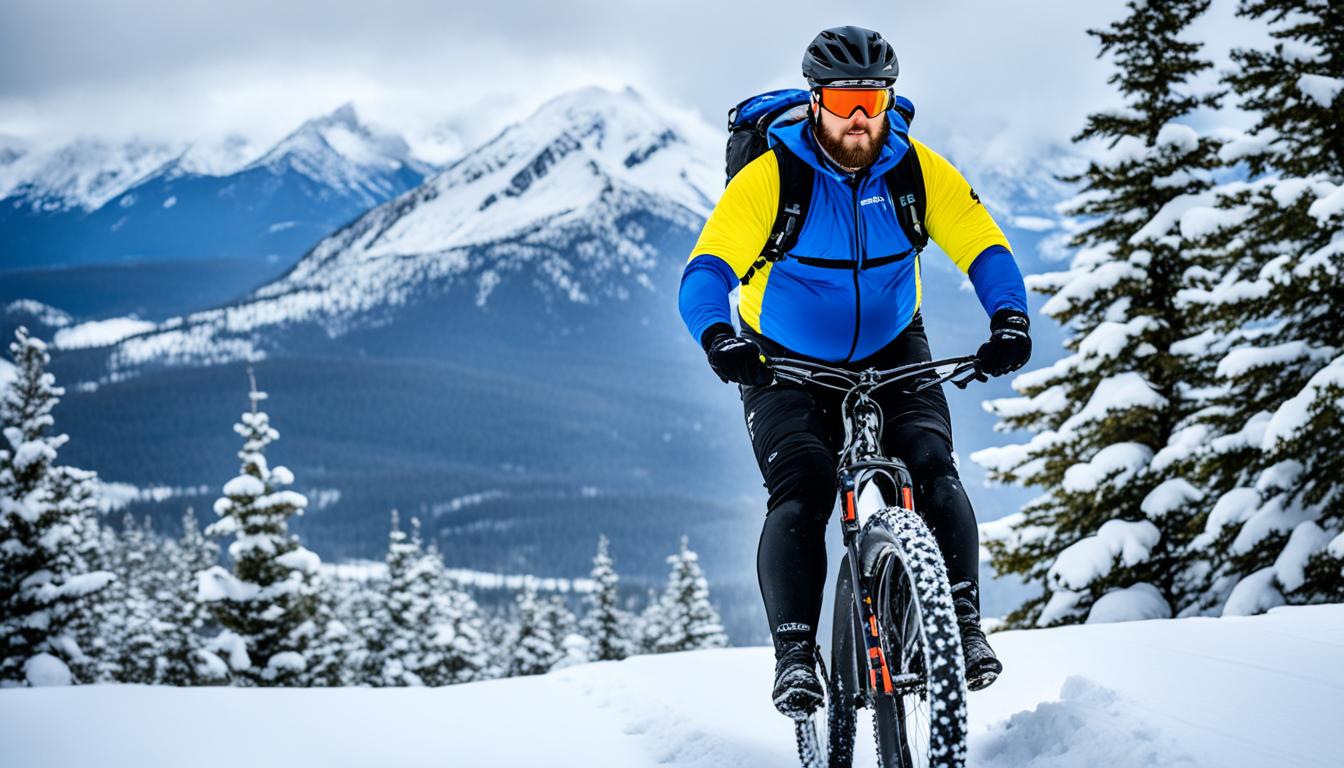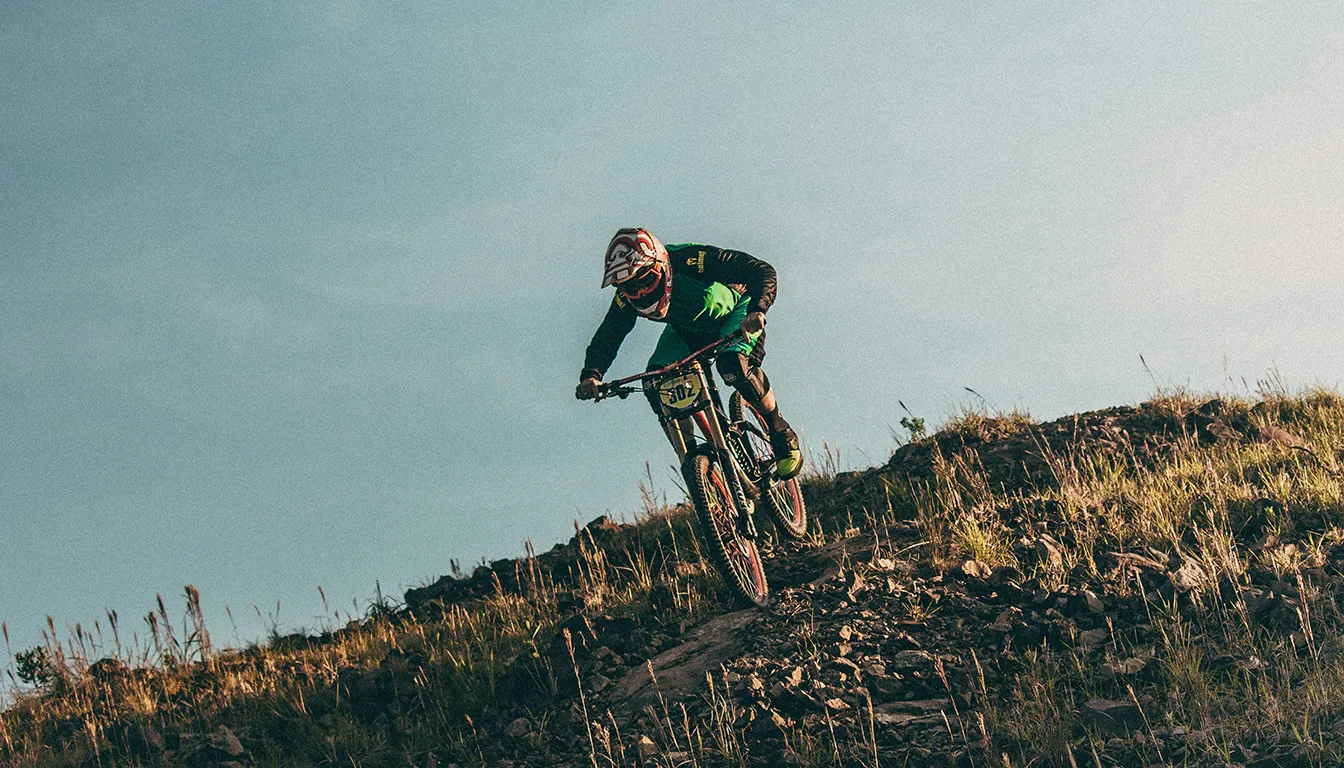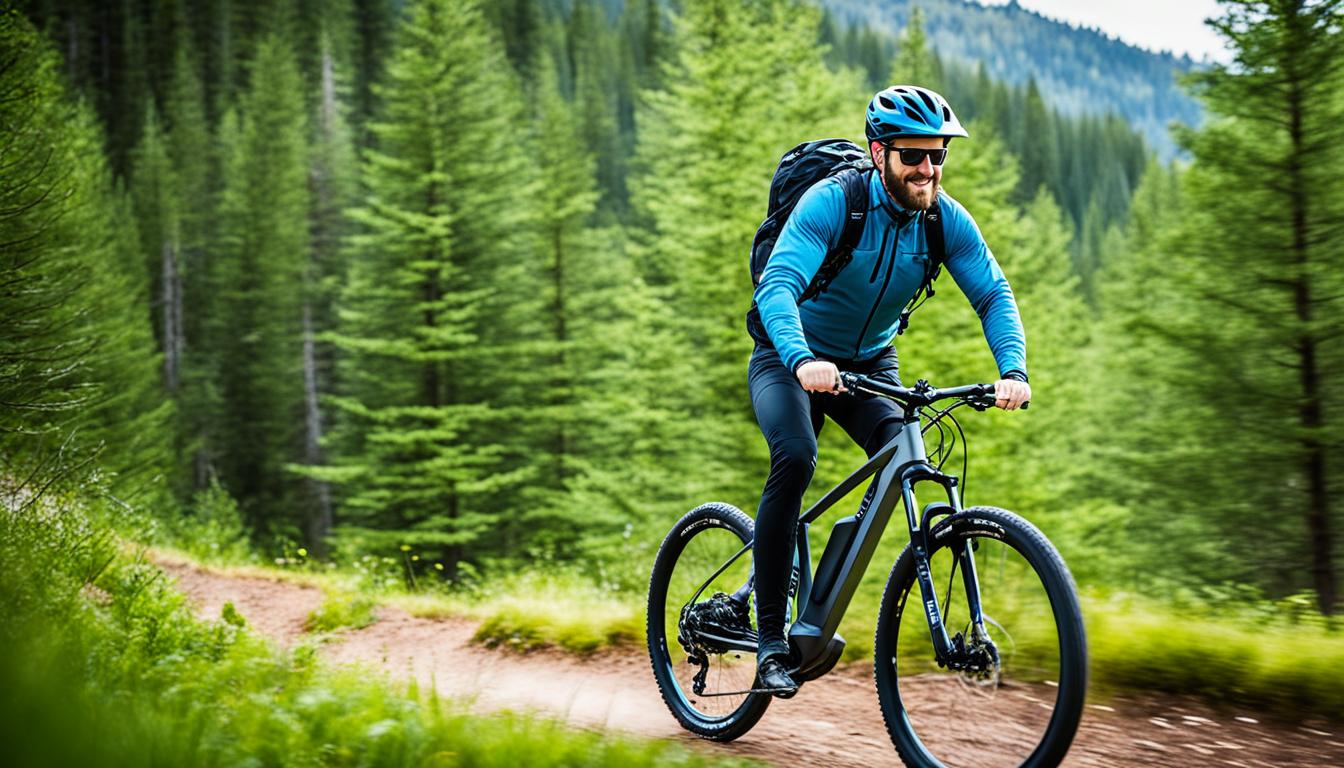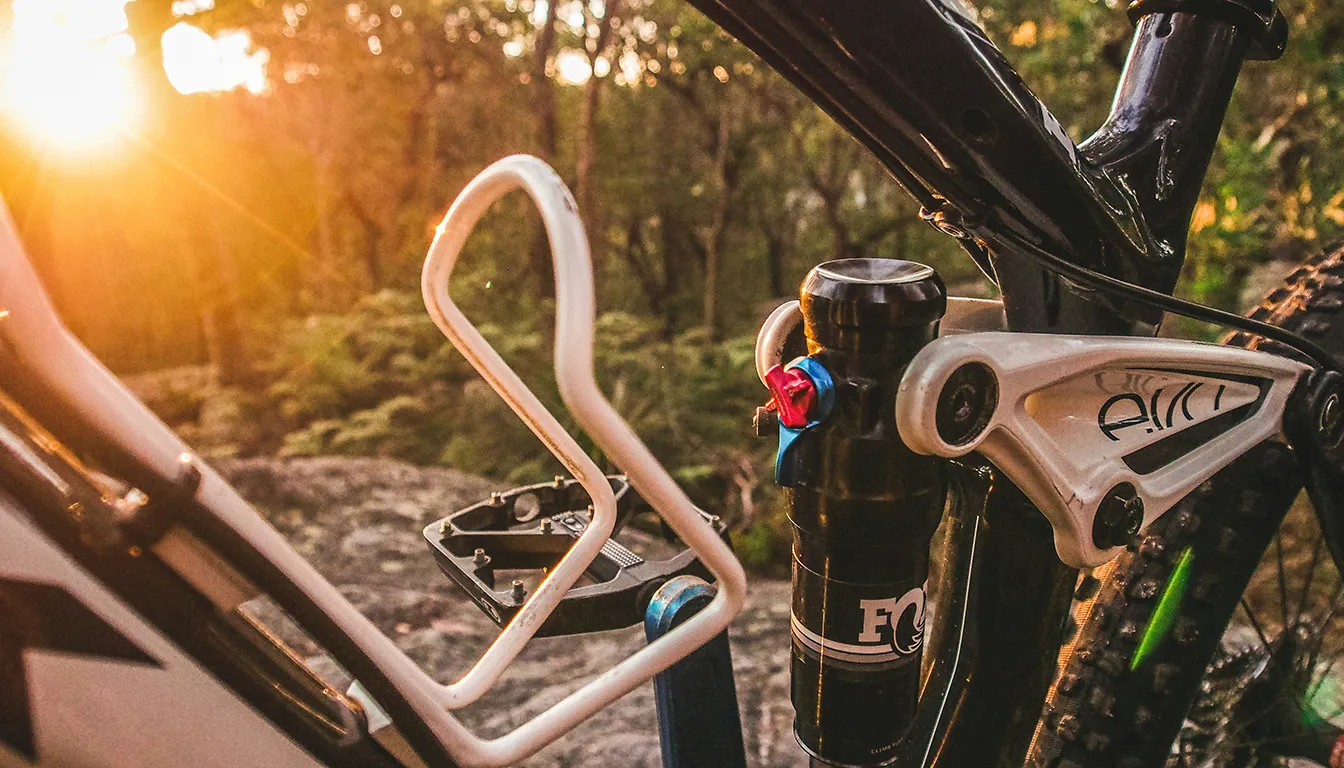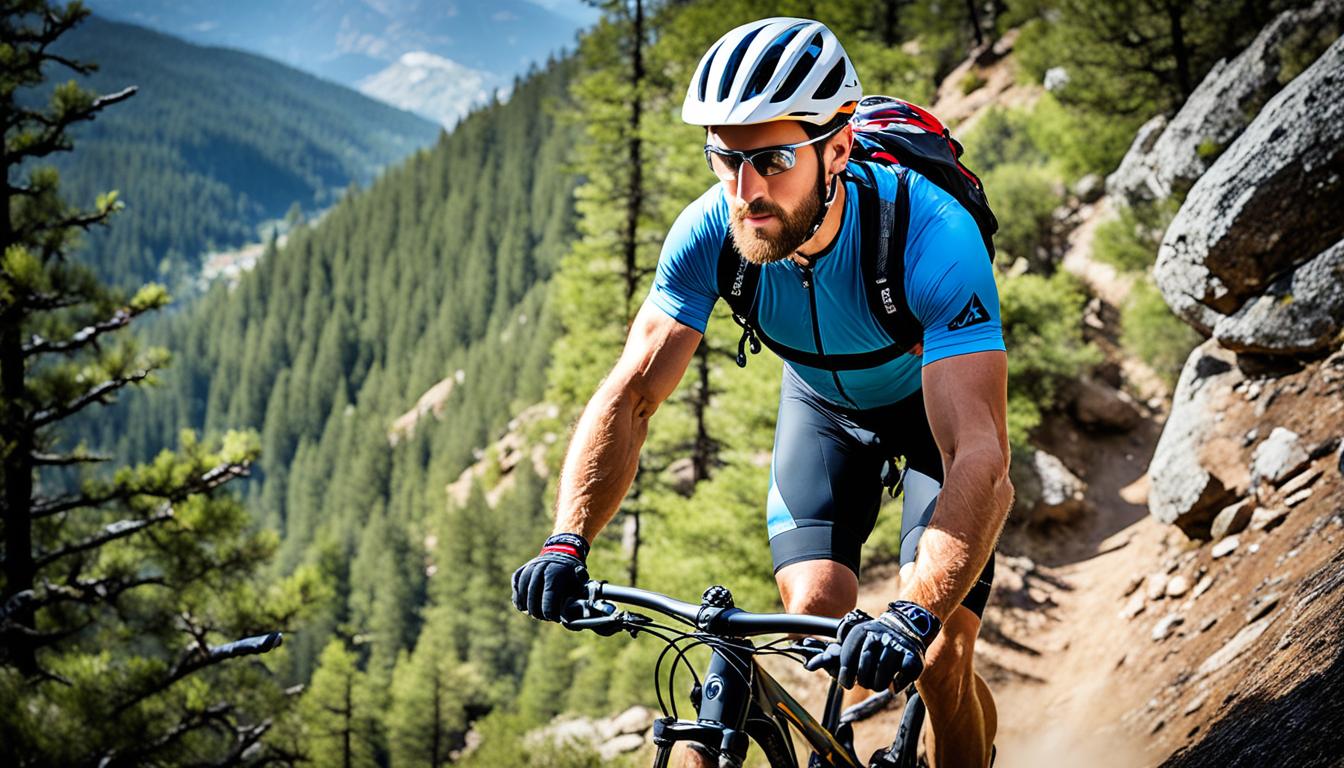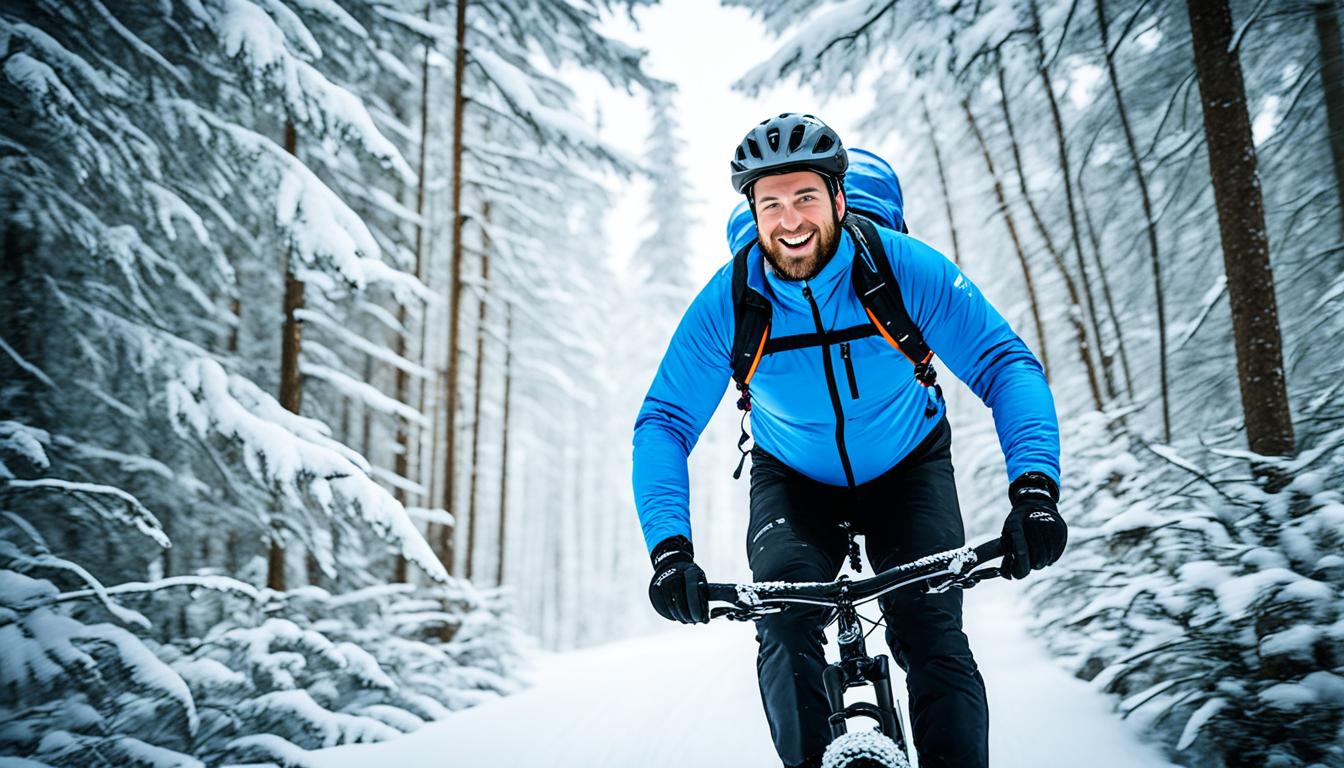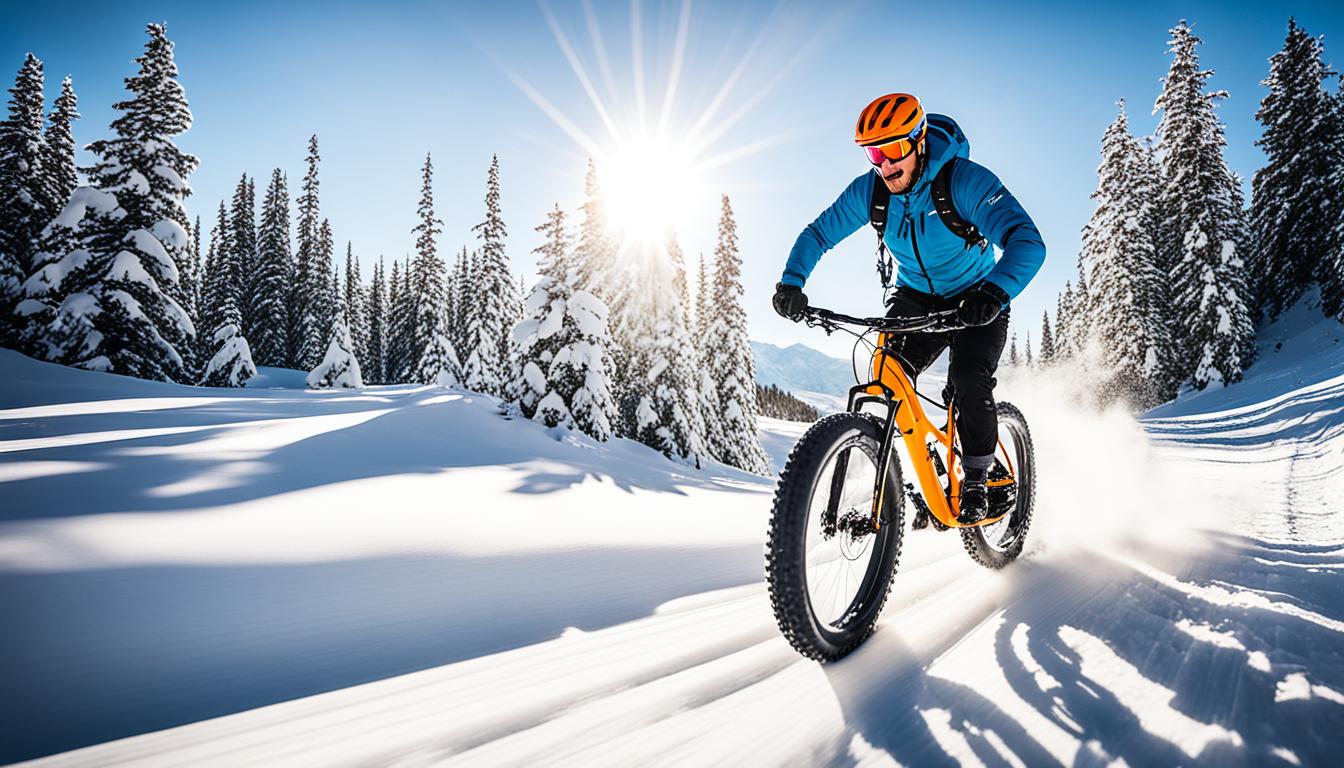Fat biking is an all-season sport offering thrilling rides across different terrains. Whether it’s gliding over snowy paths or rugged mountains, the key to enjoyment lies in understanding the basics. This includes choosing the right bike, learning specific riding techniques, and wearing the correct gear. These steps are vital to tackle varying weather conditions effectively.
Fat bikes stand out with their wide tires, providing stability and grip on diverse surfaces. For a better experience, reducing tire pressure can improve traction. Opting for flat pedals adds to stability while riding. Also, wearing layers helps manage changing temperatures. With proper preparation and know-how, fat biking becomes a safe and thrilling journey, regardless of the weather.
Introduction to Fat Biking
Fat biking is becoming very popular, letting riders explore all sorts of places. It is based on the fat bike design, which has very wide tyres, from 3.5 to 5 inches. These big tyres help the bike stay stable and move easily on snow, sand, and mud. This makes it perfect for those who love being outdoors and want to see new landscapes.
The benefits of fat biking are many. They make it easier to ride in tough conditions while being active. If you’re new to this, you’ll like how the wide tyres help you balance and feel more confident. Fat bikes turn regular cycling into a great adventure.
Since 1981, Littleton Bike & Fitness, in downtown Littleton, has been renting out fat bikes. These bikes come with 4.6” studded tyres and brakes that work very well. This makes sure you have a fun and safe trip on the trails at PRKR Mountain. In the winter, they prepare about 10 miles of trails just for fat biking. These trails are good for all kinds of riders.
Getting involved with the fat biking scene is fun, thanks to events like the clinics at Littleton Bike & Fitness. Dave runs these on some Saturdays. They teach you useful things to make riding even more fun. For newbies, there’s the Orange Trail at PRKR Mountain, which is a great place to start and gain confidence.
The Unique Features of Fat Bikes
Fat bikes stand out due to their special build. They’re made for different terrains and tough weather. A key unique feature of fat bikes is their broad, low-pressure tyres. These range from 3.7 to 5.05 inches wide. Thanks to these tyres, fat bikes offer great traction and stability. This makes them great for snow, mud, or soft sand.
The tyres on fat bikes make for a stable ride on tricky surfaces. Although these bikes are a bit heavier, they’re still fun to ride. They also promote physical fitness. Take the Trek Farley 9.6 Fat Bike as an example. It’s quite light at 28 pounds, 12 ounces, and its 4.5-inch tyres help it grip better while making it easy to pedal.
Fat bikes are also very durable. Bikes like the Trek Farley are made with advanced materials. These materials keep the bikes light but strong. Riding on fat bike tyres at low pressures, from 5 to 15 psi, boosts grip and comfort. So, they stand up well in tough conditions.
Looking into fat biking shows its advanced design and versatility for all seasons. By exploring features like drivetrain quality, bikers can customize their experience. For tips on choosing the right fat bike gear, check out this guide on fat biking essentials.
Understanding Terrain Adaptability
Fat biking is a sport full of excitement. It shines on different terrains, thanks to its design. Thinking about tyre size and pressure is key for good performance.
Tire Size and Pressure
Fat bikes have tyres that are 3.8 to 5 inches wide. These large tyres give you more stability and grip. This is very useful on snow, sand, and mud. The pressure in the tyres is kept low, between 5 to 10 psi. This increases the area that touches the ground. It helps the bike stay stable and not sink into soft ground. This is especially useful in snow.
Bikes adapt to different terrains by changing tyre pressure. Lowering the pressure can make the ride smoother. It helps the bike handle bumps and hurdles better.
Weight and Handling Characteristics
Even though fat bikes are heavier than normal mountain bikes, new materials have made them lighter. They are still strong and durable. The design of fat bikes focuses on stability and easy handling. This lets riders control the bike well, even at low speeds. This is very important on difficult paths.
Where regular mountain bikes struggle, fat bikes do well. They are perfect on sand, mud, and snow. They give you better grip and stability. This means you can have an exciting ride without worrying about slipping.
Fat Biking Tips for Various Weather Conditions
Fat biking is unique because of the weather and ground you ride on. Riders improve their rides by using special strategies for winter. They also learn how to move through mud and sand better.
Winter Riding Strategies
Winter fat biking is fun if you have the right stuff and know-how. Wearing the right winter gear for fat biking keeps you warm. Here are some important tips:
- Start on easier trails. Hard-packed snow is best for beginners. It’s important to feel sure of yourself before you try harder tracks.
- Keep a consistent pace. This helps keep your tires in good touch with the snow. It also makes you less tired.
- Stay hydrated. You use more energy in the cold. So, drinking water often is key.
- Dress wisely. Dress for the cold. Wear layers, and don’t forget glove liners under your gloves to keep warm.
- Monitor tyre pressure. Keeping your tires at 5-15 PSI helps grip the snow better.
- Invest in good gear. A product like the 45NRTH Dillinger Studded Tire increases your grip, especially on ice.
Tips for Riding in Mud and Sand
Riding in mud or sand after winter means changing how your bike is set up. It also means changing how you ride. To bike well in mud, consider these ideas:
- Lower tyre pressures. This gives you better grip and control on slick grounds.
- Select manageable trails. Choose paths that are easier. This makes your ride more fun.
- Adjust riding techniques. Keep going by choosing the best paths. Learn how to handle changing grounds when biking in mud and sand.
- Familiarise yourself with terrain. Knowing the area helps you make better decisions while riding.
Following these strategies for snow biking and tips for mud and sand biking improves your skills. It also makes biking in different weather more fun.
Choosing the Right Fat Bike for You
Finding the right fat bike means knowing how you like to ride and where you’ll do it. If you plan on choosing a fat bike for snowy trails or sandy shores, getting one that fits your activities is key for fun.
- Intended Use: Think about if you’ll ride on trails, commute, or go on big adventures. Your choice will help decide the frame material and the bike’s features.
- Frame Material: You can pick from carbon, titanium, steel, or aluminium, each with its own perks. Carbon is both light and strong, while steel provides durability and a smooth ride.
- Wheel Size: Most fat bikes now have wheels that are either 26-inch or 27.5-inch. Both sizes work great in soft conditions. Wider tires make the bike more stable.
- Pricing: Prices range from £1000 to £5000. Brands like Mongoose and Salsa have different models at various prices to fit your budget and preferences.
Looking at these factors helps you choose wisely from the fat bike brands available. Ensure the bike meets your needs for the best riding experience.
Essential Gear for Fat Biking
Choosing the right gear is essential for fat biking fun. The right clothing and shoes improve comfort and safety on different terrains. Quality items suited to your needs make a big difference, whether for winter or other seasons.
Clothing and Footwear
Layering is vital for winter biking. Begin with thermal base layers that keeps you dry. Then, add waterproof outer layers to protect against wind and snow. Some popular items are:
- 45NRTH Wolvhammer winter boots priced at $325, great for icy conditions.
- The NorthFace Chilkat boots, a budget-friendly pick at $130.
- 45North Gaiters, perfect for keeping snow out of your boots.
- Pogies like Dogwood Designs Poagies at $135 for warm hands, and 45NRTH Cobrafist pogies for $115.
Choosing the right gloves is also crucial. By mixing layers, you keep your hands warm but still moveable. Don’t overlook face protection; options include buffs and goggles to fight the cold. Always pick your biking clothing based on the expected weather.
Safety Equipment
Safety gear is a must for fat biking. A proper helmet is crucial, especially on ice. Protecting other parts of the body is important too; knee and elbow pads can help if you fall. You should always bring:
- A first aid kit for small injuries.
- USB rechargeable lights to be seen in the dark.
- A high-volume, low-pressure pump for tire problems.
- Snacks and water for energy during long trips.
Having essential biking safety equipment means you’re ready for anything. The right gear lets you enjoy the ride worry-free. Remember to plan for weather changes. Being well-prepared turns every ride into an adventure, regardless of the conditions.
Maintenance Tips for Your Fat Bike
Proper fat bike maintenance is key for top performance and long bike life. Keep up with regular checks and cleans for a better ride. Make sure to check the tyre pressure and clean the drivetrain regularly. Here are some top tips for bike care:
- Cleaning your bike after muddy or sandy rides prevents harmful build-up.
- Use high-quality chain lube for the chain after cleaning.
- Check regularly for wear or damage, especially in important parts.
- Store your bike properly when not in use to protect it from weather damage.
To refine your bike care routine, using portable spray washers and wipes is smart. A noisy bike usually means the chain needs love. Clean it and use fresh lube to make rides better and the chain last longer.
Understanding how weather impacts your bike is crucial for its care. Conditions like mud and cold can be tough on bikes. Always clean your bike after rides and think about using fenders for protection. Knowing how to maintain your fat bike will surely enhance your adventures.
For more tips, including how to improve your riding, see this useful guide.
Conclusion
In this summary of fat biking, we’ve looked at what makes the sport special and fun. It’s important to know your fat bike’s features, how to ride on different terrains, and using the right tire pressures. Adjusting your tires correctly for snow, sand, or trails can improve your rides a lot.
Fat biking brings more than just fun; it’s about adventure and exploring new places. Learning to ride in tough weather makes you confident and safe. Also, using the right equipment and taking good care of your bike will help it last longer and perform better.
So, fat biking is a way for everyone to enjoy nature and meet people who love the same things. By getting into the spirit of fat biking, you’re set for many adventures and great moments on the trails.
FAQ
What terrains are suitable for fat biking?
Fat biking is great for soft terrains like snow, sand, and mud. Its oversized tyres offer more stability and better grip.
What should I wear while fat biking in winter?
Wear layers including thermal base layers and waterproof top layers. Don’t forget snow boots for warm feet and protection.
How do I choose the right fat bike for my needs?
Choosing a fat bike depends on how and where you’ll ride. Consider the frame material and wheel size to best fit your style.
Are there any safety precautions to follow when fat biking?
Yes, always wear a fitted helmet and protective gear like knee and elbow pads. Bring a first aid kit and bike maintenance tools to stay safe.
How do I maintain my fat bike for longevity?
Regularly check your bike’s tyre pressure and keep the drivetrain clean. Store it properly when not in use. A good maintenance checklist helps keep your bike in top shape.
What are the benefits of riding a fat bike over a traditional mountain bike?
Fat bikes offer better stability and control on rough terrains, making them perfect for year-round adventures. They’re a solid workout and a fun way to boost your fitness.
What strategies should I follow when riding in muddy or sandy conditions?
Lower your tyre pressure for better traction in mud or sand. Choose easier trails to save energy. Fine-tune your riding style to keep going through tough spots.
Why is understanding tyre size and pressure crucial in fat biking?
Knowing about tyre size and pressure is key for top performance. Fat bike tyres are wider and run at lower pressures. This gives you more control and floatation on soft grounds.
